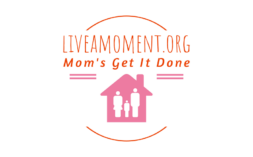How to Improve Work Life Balance
As we delve into the realm of achieving a better work-life balance, it’s crucial to acknowledge the significance of prioritizing tasks effectively. How to improve work life balance professional commitments with personal endeavors requires a strategic approach that aligns with individual goals and values.
In today’s fast-paced world, where technology seamlessly integrates work into our personal lives, setting clear boundaries is essential. Establishing designated work hours and personal time can help delineate when to focus on professional duties and when to unwind and recharge.
How to improve work life balance, incorporating self-care practices into daily routines is paramount for maintaining equilibrium between work and life outside the office. Whether it’s engaging in physical exercise, mindfulness activities, or spending quality time with loved ones, nurturing oneself is fundamental to overall well-being.

Evaluate Current Work-Life Balance
As I reflect on my current work-life balance, it’s crucial to take stock of how much time and energy I devote to work versus personal life. One way to assess this is by considering the hours spent on work tasks each day compared to those dedicated to relaxation or hobbies. By analyzing this ratio, I can gain insight into whether there’s a healthy equilibrium between my professional responsibilities and personal well-being.
How to improve work life balance Another aspect worth evaluating is the emotional impact of my work on my personal life. Do I often find myself stressed, irritable, or constantly thinking about work even during off-hours? Recognizing these signs can indicate an imbalance that needs addressing. Additionally, assessing how fulfilling and rewarding my job feels versus the time and effort it demands can shed light on whether adjustments are necessary.
To delve deeper into understanding my current work-life balance, it’s beneficial to consider how well I disconnect from work during non-working hours. Am I able to truly unwind and enjoy quality time with loved ones without being preoccupied by work-related thoughts or emails? This ability to mentally switch off from work can significantly influence overall happiness and satisfaction levels in both professional and personal spheres.
Furthermore, examining the physical health indicators such as sleep quality, exercise routine consistency, and general stress levels can provide valuable insights into the holistic impact of my current work-life balance. These factors play a vital role in determining if adjustments need to be made to ensure a more harmonious relationship between work commitments and personal well-being.
In summary, evaluating one’s current work-life balance involves introspection into time allocation, emotional well-being, ability to disconnect from work, and overall physical health indicators. By actively assessing these areas, I’ll be better equipped to identify areas for improvement and make informed decisions towards achieving a healthier and more balanced lifestyle.

Set Boundaries Between Work and Personal Life
When it comes to maintaining a healthy work-life balance, one crucial aspect is setting clear boundaries between your professional responsibilities and personal time. Here are some effective strategies to help you achieve this:
Establish Clear Working Hours
Setting specific working hours can help you create a structured routine and delineate when you are available for work-related tasks. Communicate these hours with your colleagues or clients to manage expectations regarding your availability.
Designate a Workspace
Create a dedicated workspace in your home or office where you can focus solely on work tasks. This physical boundary helps signal the start and end of the workday, making it easier to mentally switch between work mode and relaxation mode.
Limit Digital Distractions
In today’s hyper-connected world, constant notifications and emails can blur the line between work and personal life. Consider silencing non-urgent notifications during off-hours or using apps that block distracting websites to stay focused during work hours.
Plan Leisure Activities
Schedule regular breaks throughout the day to engage in activities that bring you joy and relaxation. Whether it’s going for a walk, practicing mindfulness, or pursuing a hobby, incorporating these moments into your daily routine can enhance overall well-being.


